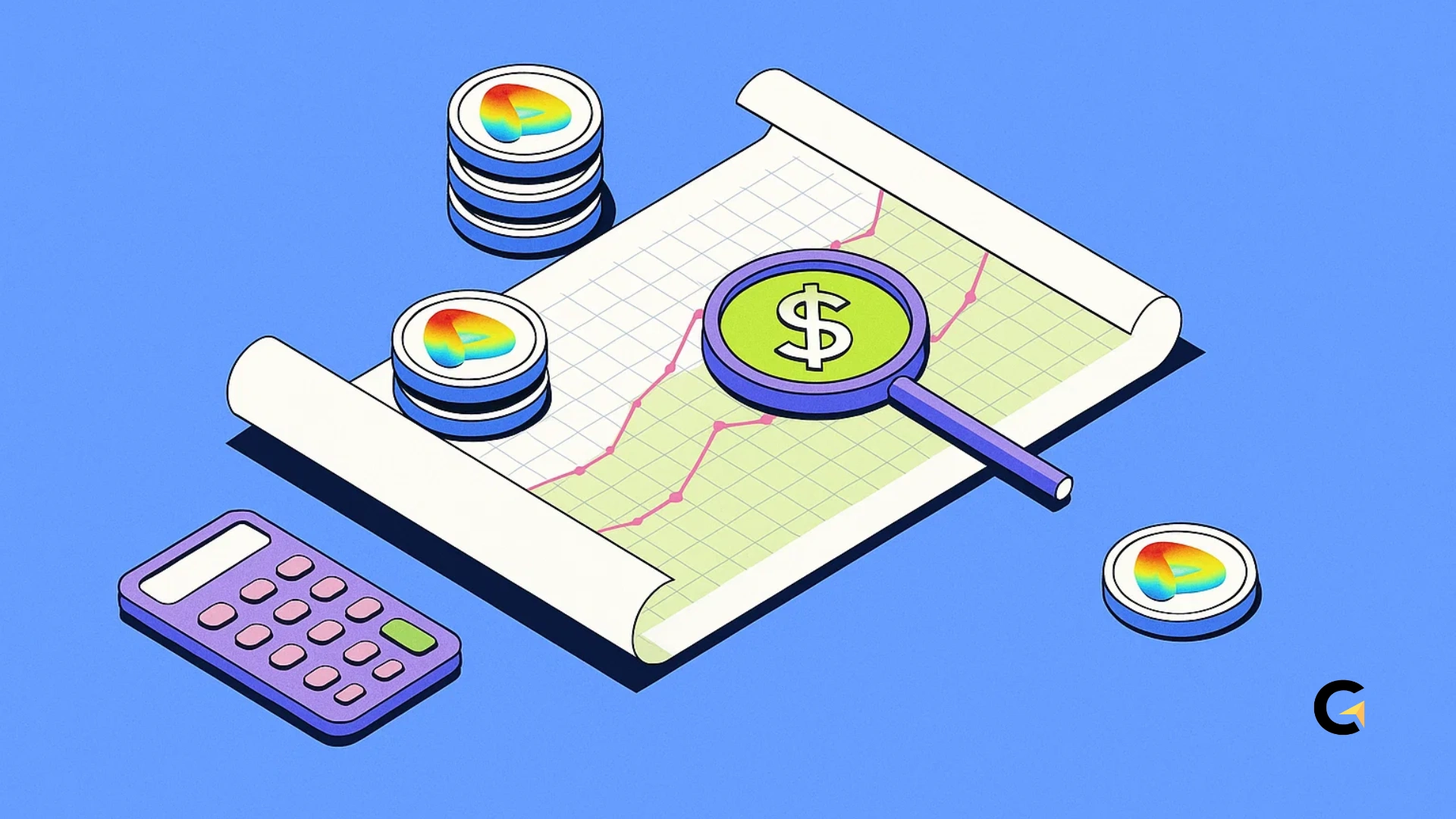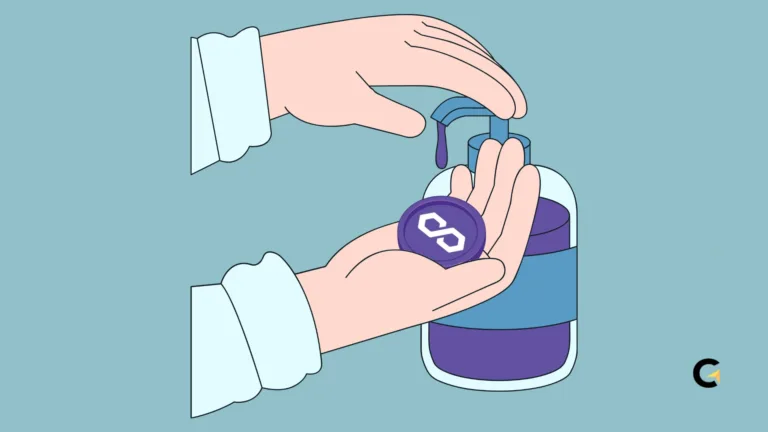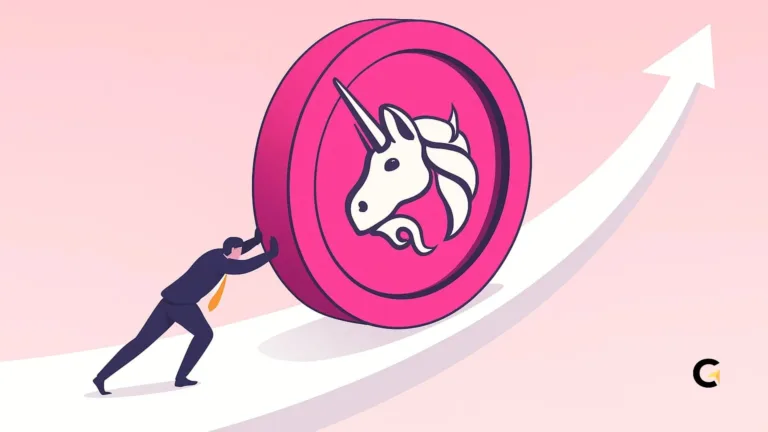Curve DAO Token (CRV) Price Prediction 2030
Curve DAO Token (CRV) approaches 2030 amid a complex matrix of technological innovation, market forces, and regulatory shifts. Experts forecast a range between $0.078 and $7.08 for CRV by December 2030.
From cross-chain integrations which lead a substantial gains, to macroeconomic downturn that may lead a dip, in this article we will breakdown each catalyst and sentiment that drive $CRV price in the future.
Key Takeaways:
Hide- DigitalCoinPrice: Projects CRV between $2.80–$3.17 by 2030 (Source: DigitalCoinPrice)
- Changelly: Forecasts CRV ranging $3.72–$6.16 (Source: Changelly)
- CoinCodex: Predicts a low of $0.078 and high of $0.96 (Source: CoinCodex)
- Bitget: Anticipates best-case $5.20 and likely $3.00–$3.50 (Source: Bitget)
- TheCurrencyAnalytics: Envisions CRV from $3.37–$7.08 (Source: TheCurrencyAnalytics)
How High will Curve DAO Token (CRV) go by 2030?

In assessing CRV’s outlook, technical signals, fundamentals, and sentiment align to inform projections.
Moving averages and RSI indicate momentum, while cross-chain developments, institutional adoption, and governance upgrades drive fundamental value.
Concurrently, competitive pressures and security vulnerabilities present constraints, underscoring the complexity of forecasting CRV’s path through a dynamic DeFi ecosystem.
Technical Analysis
Long-term chart patterns offer directional clues despite the speculative horizon.
A sustained close above the 200-day simple moving average, projected near $2.85 in bull scenarios, would confirm enduring strength.
The Relative Strength Index (RSI) consistently above 50 signals buyer conviction; readings between 60 and 70 denote robust momentum, while spikes above 70 warn of overbought risk.
The MACD should maintain positive crossovers to validate upward trends, targeting values around 0.25 by 2030. Volume must accompany any breakout to reduce false signals.
Monitoring support at prior long-term lows and resistance at historical high-volume nodes aids in timing entries and exits.
Bullish Catalysts
CRV’s upside hinges on several high-impact drivers. Continued institutionalization of DeFi, estimated at a 70% likelihood, could inject $1–$2 into CRV’s price, reflecting capital inflows from hedge funds and asset managers.
Cross-chain interoperability (60% likelihood) expands market reach, potentially adding $0.50–$1.00 by unlocking new liquidity pools.
Tokenomics enhancements (50% likelihood), such as emission schedule tweaks or staking reward optimizations, may contribute $0.25–$0.75 in value appreciation.
Strategic alliances and integrations, spanning yield-aggregators to layer-2 networks, can trigger short-term spikes of 20–30%, elevating CRV toward its upper forecast range.
Barriers Looming Shadows
Significant headwinds threaten CRV’s ascent. Regulatory restrictions, including MiCA-style compliance mandates, carry a 50% probability of reducing CRV’s price by $1–$2 if access is limited in major markets.
Intensifying competition (70% likelihood) from automated market makers and next-generation DEXs may divert liquidity, constraining gains by $0.50–$1.50.
Security vulnerabilities (30% likelihood) pose existential risk: a major hack could wipe out $1–$3 in token value.
Broader market corrections, estimated at 40% likelihood, can override fundamentals, pushing CRV back toward $0.20–$0.30 in systemic downturns.
Effective risk management requires tracking regulatory developments, protocol audits, and overall crypto-market sentiment.
Expert Insights
Seasoned analysts underscore both CRV’s promise and perils. Industry veterans highlight CRV’s specialization in stablecoin swaps and robust governance framework as pillars of long-term value.
They stress that token utility must expand through tangible cross-chain integrations and institutional partnerships.
Skeptics caution that half-executed upgrades or subpar security audits could erode confidence.
The consensus: success hinges on Curve’s ability to innovate continuously and uphold a pristine on-chain security record.
Community governance debates around tokenomics will shape market sentiment, making DAO proposals a barometer for investor confidence.
Competitive Landscape
Curve faces a Darwinian DeFi arena. Uniswap remains the dominant AMM with broader asset coverage but less efficient stablecoin handling. Balancer offers customizable pools, trading off specialized efficiency for flexibility.
Emerging protocols tout lower fees and capital efficiency, threatening to siphon CRV’s liquidity.
Curve’s competitive edge rests on deep liquidity in stablecoin pairs, low slippage, and DAO-driven incentives.
Maintaining this edge demands timely upgrades, aggressive liquidity mining programs, and strategic partnerships.
Observing shifts in TVL rankings and protocol revenue can signal competitive encroachment early, guiding tactical reallocations.
Sustainability and Risk
Yield farming’s allure must be balanced against token inflation and sustainability.
High emission rates attract liquidity but risk diluting token value over time. Curve’s governance must calibrate incentives to prevent yield-driven sell-pressure.
Staking participation secures the network but introduces lock-up risks if participants flee during downturns.
Smart-contract audits and continuous bug bounty programs are critical to preempt exploits.
Macro risks, including regulatory clampdowns and crypto-winter conditions, demand diversified exposure and hedging strategies.
Price Prediction
Synthesizing technical, fundamental, and sentiment factors yields a wide forecast: in a bearish scenario, driven by regulatory setbacks and competitive displacement, CRV may slip to $0.078.
A neutral path, reflecting steady DeFi growth and incremental upgrades, centers between $2.80 and $3.50.
Under optimal conditions, marked by successful cross-chain integrations, institutional inflows, and tokenomics enhancements, CRV could climb to $5.20 and even $7.08 by December 2030.
The spectrum underscores crypto’s inherent volatility; prudent investors should align position sizes with risk tolerance and adjust strategies as on-chain metrics and market dynamics evolve.
Considerations for $CRV Investors
Navigating CRV’s 2030 landscape requires disciplined analysis and strategic flexibility. Apply these best practices to optimize timing and manage risk:
- Validate any breakout with volume above the 200-day MA (≈$2.85).
- Use RSI thresholds (60–70) to confirm sustainable momentum.
- Track MACD crossovers for early trend reversals.
- Monitor TVL shifts across Curve pools for catalyst confirmation.
- Stay current on regulatory frameworks in key jurisdictions.
- Audit DAO proposals for tokenomics adjustments to gauge community alignment.
The Future of Curve DAO Token (CRV) by 2030
Curve DAO Token’s journey to 2030 blends promising fundamentals with formidable risks.
Technical indicators, moving averages, RSI, and MACD, provide entry and exit cues, while catalysts like institutional DeFi adoption and cross-chain integrations drive potential upside.
Barriers including regulatory restrictions, competition, and security vulnerabilities underscore the necessity of robust risk management.
Expert insights highlight the importance of governance and innovation, while competitive monitoring informs tactical adjustments.
Price projections range from a bearish $0.078 to bullish highs of $7.08, emphasizing wide dispersion.
Success hinges on disciplined execution, vigilant on-chain monitoring, and adaptive strategies in an ever-evolving DeFi ecosystem.







